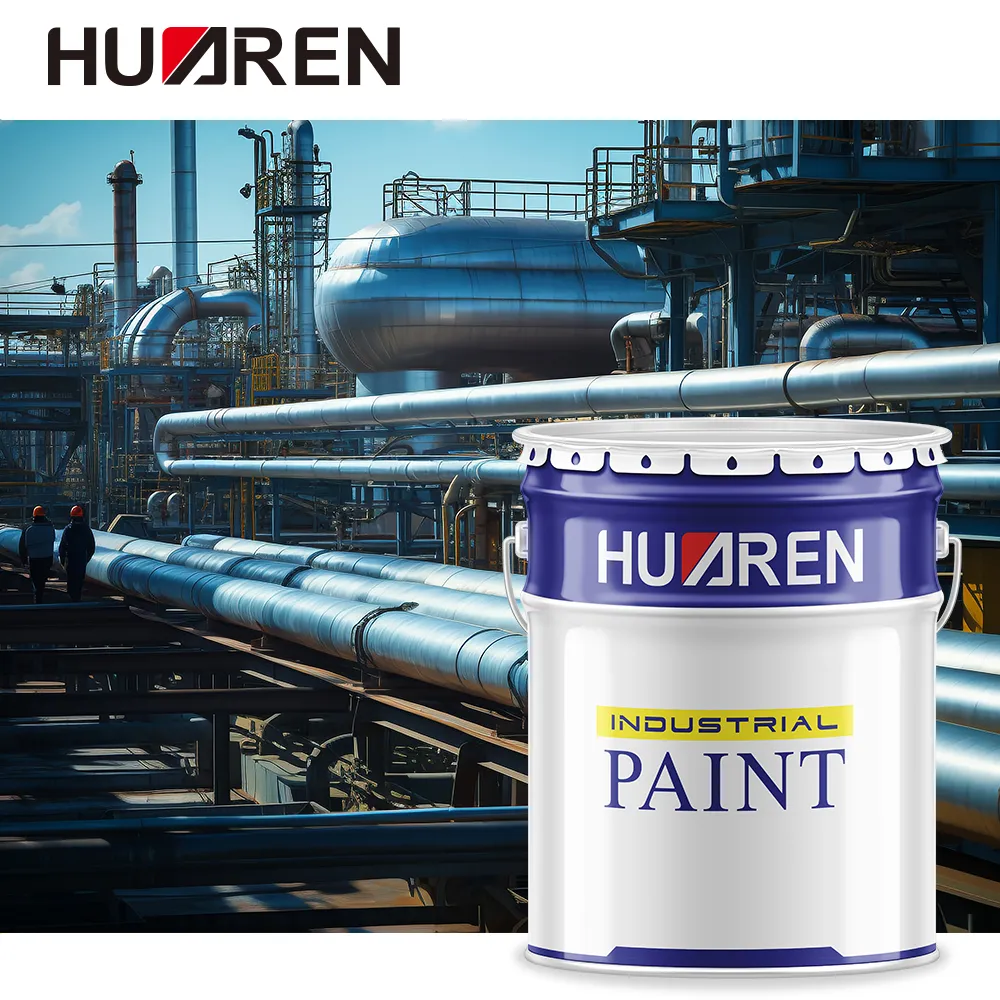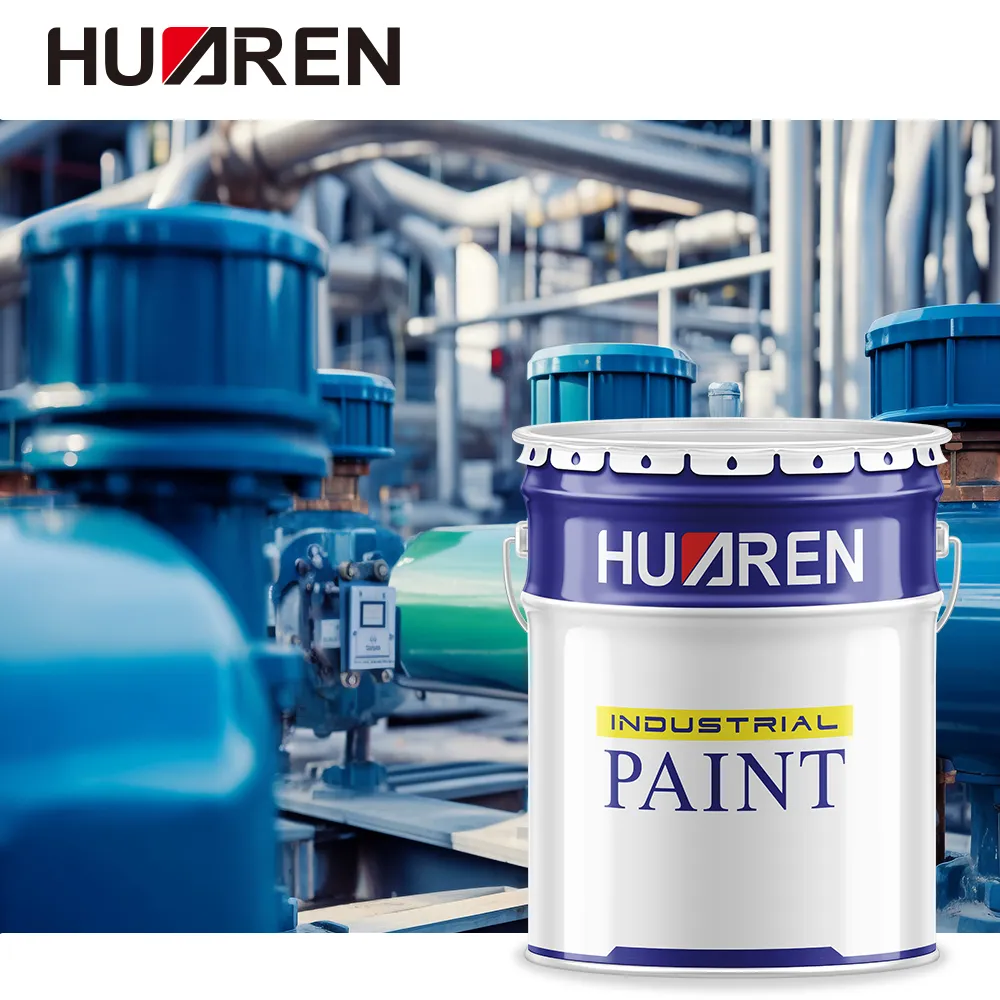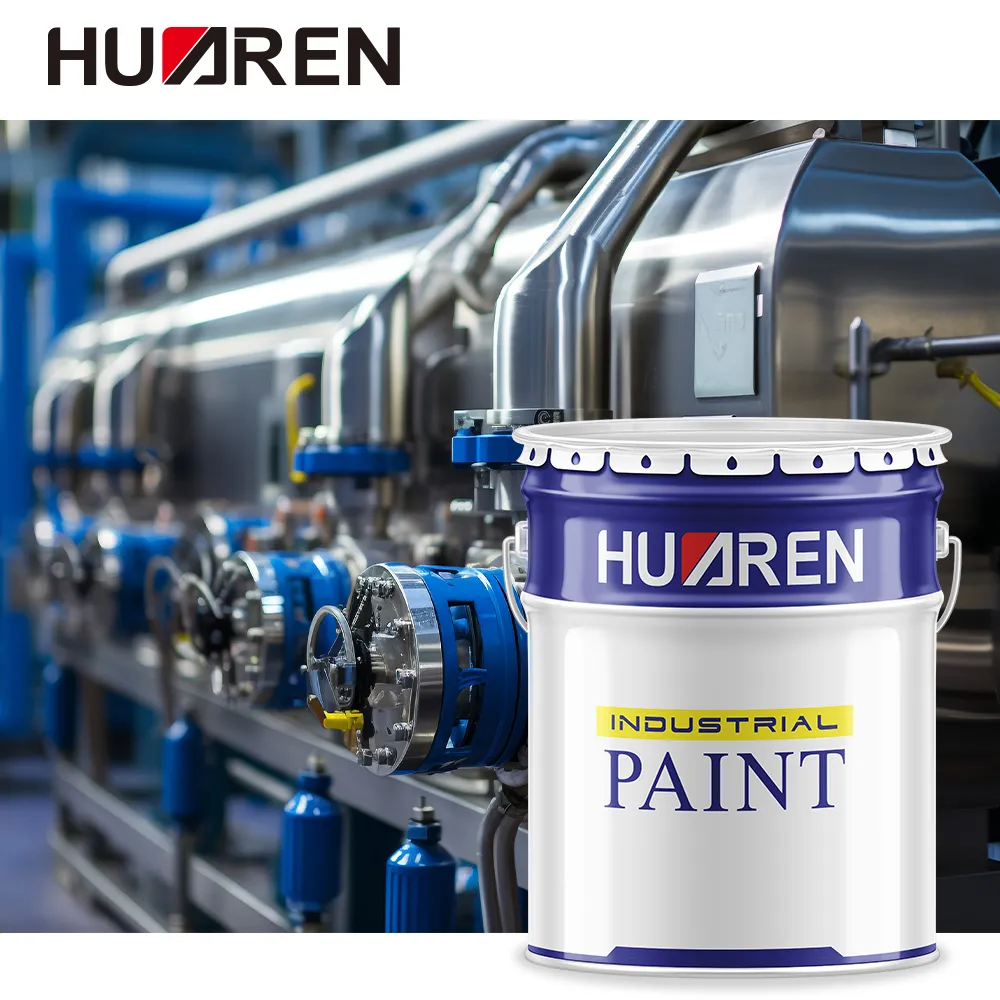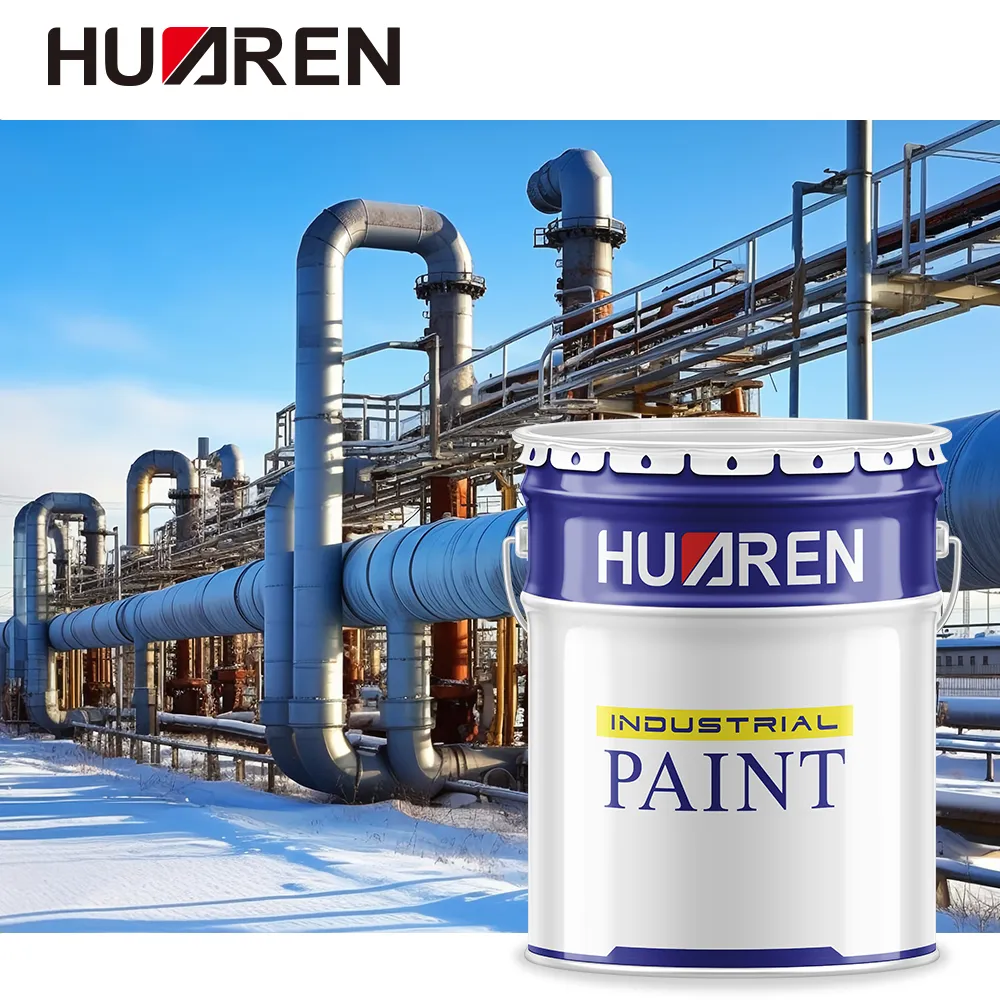The wide application of steel in the construction field is self-evident. It has the advantages of high strength, plasticity, durability, etc., and is widely used in important structures such as high-rise buildings, bridges, and industrial facilities. However, although steel itself is not flammable, in a high-temperature fire environment, the mechanical properties of steel will rapidly decrease, its bearing capacity and stability will be seriously threatened, and even cause structural collapse. Therefore, the surface of steel needs to be painted with fire retardant paint to ensure additional protection for buildings and facilities in the event of a fire.
This article will explore in depth why steel needs to be painted with fire retardant paint, as well as related issues such as the service life of fire retardant paint.

What is the weakness of steel in fire?
The melting point of steel is about 1500℃, so it seems that steel will not melt easily due to fire. But in fact, the performance of steel will be significantly reduced in a fire, especially when the temperature reaches above 500℃, its strength and stiffness will rapidly weaken. At the beginning of a fire, the steel structure in a building may appear intact, but as the temperature continues to rise, the steel's load-bearing capacity gradually decreases, resulting in a significantly increased risk of collapse of the building or structure.
The key weaknesses of steel in fire are mainly reflected in the following aspects:
1. Temperature sensitivity of steel: Although steel has good durability and strength, its high temperature resistance is poor. When the temperature rises to 300℃, the strength of steel begins to decrease, and when the temperature reaches 500℃ to 600℃, the load-bearing capacity of steel is reduced by about half. Continuous high temperature can cause steel to lose its structural function, causing partial or complete collapse of buildings or facilities.
2. Thermal expansion effect: The high temperature in a fire causes thermal expansion of steel, and the steel structure deforms due to thermal stress, which may cause the entire structure to become unstable or partially fractured. This effect is particularly dangerous in the case of a rapidly spreading fire.
3. Heat transfer of the structure: Steel has good thermal conductivity, which means that flames and high temperatures can be quickly transferred through the steel to other adjacent components, accelerating the spread of the fire and causing more extensive damage.
Therefore, although steel performs well at room temperature, its fragility is exposed in a fire environment. This is why fire retardant paint has become a vital protective measure in the design and construction of steel structures.

What is the mechanism of action of fire retardant paint?
The main function of fire retardant paint is to delay the impact of fire on steel and ensure that the steel structure maintains its bearing capacity and structural stability for a long enough time in a high temperature environment. Fire retardant paint can form a heat-insulating protective layer through physical and chemical reactions, reducing the heat conduction and temperature rise rate on the surface of the steel.
1. Heat-insulating effect
Fire retardant paint can effectively isolate the contact between flames and steel in a fire and delay the direct ablation effect of the flame. In particular, intumescent fire retardant paint will rapidly expand under high temperature to form a dense foam layer or carbonized layer. This protective layer can not only effectively isolate heat, but also prevent steel from contacting oxygen in the air, thereby inhibiting further combustion reactions.
2. Expansion effect
Intumescent fire retardant paint is the most common type of steel structure protection. Its working principle is that when encountering high temperature, the components in the paint will react chemically, the coating will expand rapidly, the volume will increase several times or even dozens of times, and a thick insulation layer will be formed. This carbonized layer can absorb and isolate a large amount of heat, slow down the temperature rise of steel, and buy precious time for personnel evacuation and rescue.
3. Reduce the temperature rise rate of steel
The most critical role of fire retardant paint on the surface of steel is to reduce the temperature rise rate. By controlling the speed at which heat is transferred to steel, the stability of steel structures in fires can be effectively extended. Different types of fire retardant paint have different fire resistance limits, which can generally provide protection time ranging from 30 minutes to 2 hours, ensuring that the steel structure will not fail due to excessive temperature rise in the early stage of the fire.
What are the types of fire retardant paint?
According to their different components and functions, fire retardant paint can be roughly divided into expansion fire retardant paint and non-expansion fire retardant paint.
1. Intumescent fire retardant paint
Intumescent fire retardant paint is one of the most common fire retardant paints for steel structures. In the event of a fire, the coating expands rapidly to form a foamy carbonized insulation layer that isolates the heat source and protects the steel. Its advantage is that the coating is thinner but can provide fire protection for a longer period of time.
2. Non-intumescent fire retardant paint
La pintura ignífuga no intumescente se basa principalmente en su tolerancia a altas temperaturas para formar una densa capa aislante que ralentiza el daño directo de la llama al sustrato. Si bien este tipo de pintura no se expande como la intumescente, posee un importante efecto ignífugo y, por lo general, es adecuada para instalaciones y equipos industriales que no requieren una apariencia llamativa.

¿Cuál es la vida útil de la pintura ignífuga?
La vida útil de la pintura ignífuga depende de muchos factores, como el tipo de pintura, la calidad de la construcción, las condiciones ambientales y el mantenimiento posterior. En general, la vida útil de la pintura ignífuga puede alcanzar de 10 a 20 años, pero el tiempo específico depende de los siguientes factores clave:
1. Factores ambientales
El entorno en el que se ubica la estructura de acero influye directamente en la vida útil de la pintura ignífuga. Si el acero se expone a humedad, gases corrosivos o ambientes ácido-base, su efecto protector puede verse considerablemente reducido. La humedad puede provocar cambios químicos en la composición de la pintura ignífuga, lo que afecta su resistencia al fuego. En un entorno corrosivo, la durabilidad de la pintura ignífuga también se reduce significativamente, por lo que se requieren inspecciones y reparaciones periódicas.
2. Mantenimiento y cuidado
La pintura ignífuga requiere inspección y mantenimiento periódicos, especialmente en estructuras de acero expuestas a entornos hostiles durante un tiempo prolongado. Su vida útil se puede prolongar mediante la limpieza y reparación periódicas de la superficie. Además, si durante su uso se detecta desprendimiento, agrietamiento, etc., en el recubrimiento, es necesario repararlo a tiempo; de lo contrario, la resistencia al fuego se verá considerablemente reducida.
3. Calidad de la construcción
La calidad de construcción de la pintura ignífuga también es crucial para su vida útil. Durante la construcción, es necesario cumplir estrictamente las normas y especificaciones pertinentes para garantizar que el recubrimiento tenga un espesor uniforme y una buena adherencia, logrando así el mejor efecto ignífugo. Si la construcción es inadecuada, el recubrimiento podría no ejercer plenamente su efecto ignífugo y, en consecuencia, su vida útil se reducirá.
4. Tipos de recubrimientos
Diferentes tipos depinturas ignífugasTienen diferentes vidas útiles. Las pinturas ignífugas intumescentes tienen una vida útil relativamente larga y una alta resistencia ambiental, mientras que algunos recubrimientos no intumescentes pueden tener menor durabilidad en entornos hostiles. Por lo tanto, al elegir pinturas ignífugas, es necesario considerar exhaustivamente factores como los requisitos de ignifugación y las condiciones ambientales del edificio.

¿Cuáles son las precauciones de construcción para pinturas ignífugas?
La calidad de construcción de las pinturas ignífugas afecta directamente su vida útil y su efecto ignífugo. Durante la construcción, se deben tomar las siguientes precauciones:
1. Tratamiento de la superficie:Antes de aplicar pintura ignífuga, la superficie de acero debe limpiarse y tratarse estrictamente para garantizar que no haya impurezas como manchas de aceite, manchas de óxido y polvo para asegurar la adhesión y el efecto ignífugo del revestimiento.
2. Espesor del recubrimiento:El espesor del recubrimiento es crucial para el rendimiento ignífugo. Durante la construcción, el espesor del recubrimiento debe ser uniforme y cumplir con los requisitos de las especificaciones de diseño. En general, cuanto mayor sea el espesor del recubrimiento, mejor será el rendimiento ignífugo.
3. Requisitos ambientales:El entorno de construcción debe mantenerse seco y debe evitarse la construcción en clima húmedo y lluvioso para evitar que el revestimiento absorba humedad y provoque fallas.
4. Conservación y preparación de la pintura:La pintura retardante al fuego debe prepararse de acuerdo con las instrucciones del producto antes de su uso para evitar que la pintura falle debido a factores ambientales durante el almacenamiento.
Elija Huaren Chemical Industry Co., Ltd. para obtener recubrimientos industriales de alto rendimiento con beneficios directos de fábrica. Como fabricante establecido en 1994 en China, operamos 30 líneas de producción avanzadas y suministramos más de 20,000 toneladas de recubrimientos al año. Nuestros productos (pinturas epóxicas, a base de agua, fenólicas y alquídicas) gozan de la confianza de industrias como la maquinaria, la construcción y la construcción naval. Ofrecemos fórmulas personalizadas, precios bajos, presupuestos rápidos y soporte para pedidos al por mayor para satisfacer las necesidades de clientes internacionales. Compradores de Nigeria, India y Europa ya confían en nuestra marca. Contáctenos para obtener descuentos y comience su proceso de compra con una fábrica líder de recubrimientos en China.

